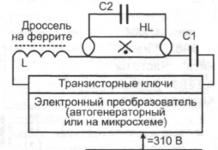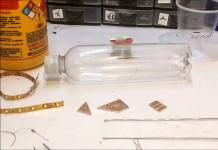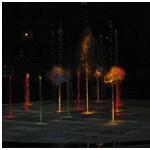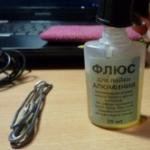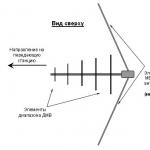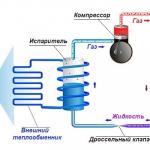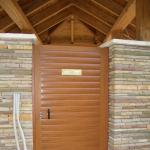Wheatgrass, woodlice, quinoa, nettle, dandelions... Weed - don't over-weed. And this annoying, exhausting work is repeated year after year. I really want to end it once and for all.
Alas, this is impossible. The supply of seeds in the soil is constantly replenished, because weeds have an unpleasant habit for us of being abundantly seeded. But one cannot surrender to their mercy, because they are competitors of cultivated plants in the struggle for light, moisture, nutrition, and, in addition, they are breeding grounds for pests and diseases.
There are many ways to control weeds, and they often sound scary: freezing, drying, exhaustion, suffocation. However, we use them without thinking about the names.
Freezing - winter death of underground parts of weeds after deep autumn digging beds. Smothering of the root system occurs if weeds are repeatedly cut at shallow depths. In an empty area, the rhizomes are depleted by constantly harrowing it for 2–3 years.
You can make your life easier by carrying out a so-called provocation: prepare the soil a couple of weeks before sowing, and when many weed sprouts appear, they are destroyed by surface loosening.
Mulching will inhibit the growth of annual weeds. Can be used for this purpose well-ripened compost, under trees and bushes - crushed bark. It is not suitable for vegetable beds, as it contains tannins. Black film will also deprive weeds of light.
Main rules of weeding:
pull out weeds before they develop a strong root system;
carefully select them from the soil;
remove before it becomes soiled;
dig up the soil not with a shovel, but with a pitchfork, so that parts of the roots do not give birth to new plants;
Weeding should be done after rain, when the roots are easy to remove from the ground.
Fencing- fence off the area that has already been cleared of such a malicious weed as creeping wheatgrass from the clogged area with a ditch 15–20 cm deep, inserting sheets of iron or slate into it.
Woodlice often spreads on acidic soils in waterlogged areas. To get rid of it, drain it, grow vegetables on high beds, produce the earth.
The most difficult thing to get rid of is perennial weeds, so you have to turn to herbicides. But on country houses Only Roundup, a glyphosate derivative, is allowed in areas and is one of the most effective weed control agents with minimal environmental impact. The name "Roundup" translates as "all-round defense". This product of the American company "Monsanto" was so named after the method of defense of American settlers from Indians, when they moved their wagons in a circle and fired back at them.
Of the perennial weeds, the most sensitive to Roundup are creeping wheatgrass, mint, and sorrel. More resistant are sow thistle, marsh grass, creeping buttercup, dandelion, coltsfoot, nettle, and field bindweed.
"Roundup" and its analogues - "Gosorg", "Fosulen", "Utal", "Hurricane", "Tornado", "Zero" - are among the systemic drugs. Within 5–10 days after treatment, the herbicide spreads throughout the plant, entering primarily areas with active cell division, penetrating into the roots, stolons, rhizomes, and tubers of perennials. After 7–10 days, the first signs of plant damage appear on the leaves, and after 20–30 days, perennial plants die entirely.
Weeds need to be treated during the period of their active growth, when the above-ground part is well developed. At the same time, the weeds should not be damaged by mechanical treatments - this blocks the movement of the drug, so the soil should not be dug up before treatment. After 15–18 days, when the effect of the drug is clearly visible, the land can be cultivated.
"Roundup" can be used in the fall after harvesting (on growing weeds - in the Non-Black Earth Region until September 25, in the south and later). At the same time, it does not have a negative effect on vegetable crops that will be cultivated next year, because rapid detoxification occurs in the soil, and the drug becomes inaccessible to plants.
Roundup is most effective in hot sunny weather with air humidity no more than 40–50%, but it also works quite well in low autumn temperatures. You need to choose calm, dry weather: if it rains within 6–12 hours after treating the weeds, it will wash off some of the drug from the leaves.
When choosing chemical measures to control weeds, you can look for information in the regularly published “State Catalog of Pesticides and Agrochemicals Permitted for Use on the Territory of the Russian Federation.” It indicates the conditions of use and the main manufacturers.
Weeds on a lawn are those plants that are not normally used for turf. They not only spoil the appearance of the area, but also deprive the grass of nutrition. Thus, weeds slow down the development and reduce the immunity of the grass flora. Weed control on the lawn is an indispensable measure for caring for the green carpet.
The appearance of unwanted vegetation is almost inevitable in a newly seeded lawn. Seeds of unnecessary plants are carried by the wind, birds, and animals. They are carried on the soles of shoes by adults and children. But once established, the main grasses crowd out most of the weeds.
Lawn that crowds out weeds - fantasy or reality
Every owner dreams of a lawn that can take care of itself. It’s a pity, but lawn grass, which literally destroys weeds, has not yet been bred. However, there are plants that can resist invaders. This , . Individually or in combination, these herbs, growing, can displace weeds. However, they cannot do without human help, especially at first.

ON THE PICTURE: Fescue (Festuca) will not only help get rid of weeds, but will also effectively decorate the lawn.
The first step to enjoying a weed-free lawn is to purchase your seeds. It is advisable to choose mixtures that have undergone high-quality processing. In addition, it is very important to keep the area fallow before sowing.
As a rule, weed seeds are much less common in lawn mixtures than in turf.
What will help increase your lawn's resistance to weeds?
- Regular trimming of the top third of grasses;
- Properly organized watering;
- Cleaning the surface with a rake, destroying ground cover weeds and felt;
- Seasonal feeding with nitrogen, phosphorus, potassium fertilizers.
What weeds can be found on the lawn?
Below are commonly found weeds on the lawn: photos and names, as well as brief descriptions, will help you identify the enemy.
Small sorrel (Sorrel)
 Perennial with a powerful root system. Erect stem up to 40 cm high. Leaves are lanceolate, green with an admixture of red. Propagated by seeds (germination -
10 years) and root shoots. It grows especially actively on soils with insufficient calcium content.
Perennial with a powerful root system. Erect stem up to 40 cm high. Leaves are lanceolate, green with an admixture of red. Propagated by seeds (germination -
10 years) and root shoots. It grows especially actively on soils with insufficient calcium content.
How to fight: treatment with a selective herbicide - at the end of spring and a month after that.
 Perennial herb with fibrous roots. The creeping stem reaches a meter in length, taking root along the way and giving birth to new plants. The leaves are trifoliate, with or without petioles. Blooms all summer with single golden flowers. Each one produces more than 100 seeds. A very aggressive plant that can cover large areas.
Perennial herb with fibrous roots. The creeping stem reaches a meter in length, taking root along the way and giving birth to new plants. The leaves are trifoliate, with or without petioles. Blooms all summer with single golden flowers. Each one produces more than 100 seeds. A very aggressive plant that can cover large areas.
How to fight: If the weed has already grown, the area can be treated with a general herbicide.
 Weed with weak rhizome. The stem is erect, from 15 to 50 cm high. At the bottom it is thickened into a bulbous tuber root. A few leaves are sessile and petiolate. Golden yellow flowers appear in late spring. Settles on moderately moist sandy soils.
Weed with weak rhizome. The stem is erect, from 15 to 50 cm high. At the bottom it is thickened into a bulbous tuber root. A few leaves are sessile and petiolate. Golden yellow flowers appear in late spring. Settles on moderately moist sandy soils.
How to fight: This type of Buttercup is difficult to eradicate; it is necessary to select a selective herbicide with several active substances. For greater effectiveness, treatment should be repeated after a month and a half.
 A plant with a fibrous, thickened root at the top. The stem is straight, bare. The leaves are dark green, dissected, shiny. It blooms from late spring to early autumn with yellow flowers. It is distinguished by its vitality, prefers light areas with moist soil.
A plant with a fibrous, thickened root at the top. The stem is straight, bare. The leaves are dark green, dissected, shiny. It blooms from late spring to early autumn with yellow flowers. It is distinguished by its vitality, prefers light areas with moist soil.
How to fight: use a selective preparation with several active substances twice. The interval is one and a half months, the first treatment is at the end of spring.
 Root-tuberous perennial. In spring, bright yellow flowers appear against a background of dark green glossy leaves. The shoots are creeping and take root at the nodes. Underground tubers form buds. The plant actively reproduces by self-sowing. It grows quickly, especially in waterlogged soil and in the shade.
Root-tuberous perennial. In spring, bright yellow flowers appear against a background of dark green glossy leaves. The shoots are creeping and take root at the nodes. Underground tubers form buds. The plant actively reproduces by self-sowing. It grows quickly, especially in waterlogged soil and in the shade.
How to fight: use a herbicide with several active substances twice with an interval of one and a half months.
 Thin roots radiate from the main root. Wide petiolate leaves are arranged alternately. Small flowers are collected in spike-shaped inflorescences. On fertile soils the number of flower stalks increases. Each plant produces thousands of seeds that remain viable for 7 years. In addition, baby bulbs form in the axils of the leaves, from which new perennials grow. Cannot be mowed or trampled. Prefers moist soils.
Thin roots radiate from the main root. Wide petiolate leaves are arranged alternately. Small flowers are collected in spike-shaped inflorescences. On fertile soils the number of flower stalks increases. Each plant produces thousands of seeds that remain viable for 7 years. In addition, baby bulbs form in the axils of the leaves, from which new perennials grow. Cannot be mowed or trampled. Prefers moist soils.
How to fight:
 A herbaceous plant with a powerful, branched root. The ovoid, pubescent leaves sit on short petioles. The tall (up to 70 cm) peduncle bears a cylindrical spike with numerous pale pink flowers. Propagated by seeds and root shoots.
A herbaceous plant with a powerful, branched root. The ovoid, pubescent leaves sit on short petioles. The tall (up to 70 cm) peduncle bears a cylindrical spike with numerous pale pink flowers. Propagated by seeds and root shoots.
How to fight: individual specimens are removed manually, otherwise a selective herbicide is used.
 Perennial with a thick taproot. The narrow, pointed leaves of the plant form a rosette. The flower arrow grows up to 50 cm. The inflorescence is a false spike. Produces tens of thousands of seeds that remain viable for more than 11 years. Grows actively in alkaline and moist soils.
Perennial with a thick taproot. The narrow, pointed leaves of the plant form a rosette. The flower arrow grows up to 50 cm. The inflorescence is a false spike. Produces tens of thousands of seeds that remain viable for more than 11 years. Grows actively in alkaline and moist soils.
How to fight: individual specimens are removed manually, otherwise a selective herbicide is used.
 A plant with lobed leaves collected in a basal rosette. The peduncle is slightly pubescent, the inflorescence is a narrow cylindrical spike. Propagated by seeds. Likes to settle in illuminated areas, prefers slightly acidic light soils.
A plant with lobed leaves collected in a basal rosette. The peduncle is slightly pubescent, the inflorescence is a narrow cylindrical spike. Propagated by seeds. Likes to settle in illuminated areas, prefers slightly acidic light soils.
How to fight: individual specimens are removed manually, otherwise a selective herbicide is used.
 It is distinguished by narrow, fleshy leaves with serrated edges. The peduncles are crowned with a short spike. Blooms from mid-summer to autumn. Propagates by self-sowing. Settles in well-drained, fertile soils.
It is distinguished by narrow, fleshy leaves with serrated edges. The peduncles are crowned with a short spike. Blooms from mid-summer to autumn. Propagates by self-sowing. Settles in well-drained, fertile soils.
How to fight: individual specimens are removed manually, otherwise a selective herbicide is used.
 Low-growing perennial with branched rhizome. The shoots of the plant quickly take root. The leaves are trifoliate. It blooms from May to October with white flowers. Resistant to cutting and trampling. Displaces not only lawn grasses, but also other weeds. Does not like acidic soils.
Low-growing perennial with branched rhizome. The shoots of the plant quickly take root. The leaves are trifoliate. It blooms from May to October with white flowers. Resistant to cutting and trampling. Displaces not only lawn grasses, but also other weeds. Does not like acidic soils.
How to fight: Creeping weed stems are raised before mowing the lawn. To prevent clover from growing, abundant watering is necessary during drought. The above-ground part of the plant can be destroyed with a general herbicide in the spring, as well as a selective herbicide in June–July.
 Recumbent or ascending stems up to 40 cm long create loose turf. The short leaves are obovate, trifoliate, and sit on petioles. It blooms with small yellow flowers collected in capitate inflorescences. It quickly settles into areas with dry sandy soils.
Recumbent or ascending stems up to 40 cm long create loose turf. The short leaves are obovate, trifoliate, and sit on petioles. It blooms with small yellow flowers collected in capitate inflorescences. It quickly settles into areas with dry sandy soils.
How to fight:
 An annual plant with a thin tap root. The stems are branched and weak. Trifoliate leaves with pointed tips. The flowers are yellow; after the seeds ripen, the inflorescences turn black.
An annual plant with a thin tap root. The stems are branched and weak. Trifoliate leaves with pointed tips. The flowers are yellow; after the seeds ripen, the inflorescences turn black.
How to fight: It is possible to remove young annual plants by hand. When using a selective herbicide, apply twice at one and a half month intervals.
 Perennial with a long taproot and numerous above-ground shoots. The leaves are trifoliate, sessile and short-petiolate. Yellow butterfly flowers are collected in umbels. Propagates by self-sowing. Grows on any soil, including acidic, and is resistant to trampling.
Perennial with a long taproot and numerous above-ground shoots. The leaves are trifoliate, sessile and short-petiolate. Yellow butterfly flowers are collected in umbels. Propagates by self-sowing. Grows on any soil, including acidic, and is resistant to trampling.
How to fight: An effective selective herbicide with several active substances, spray in June-July. Repeated treatment is required after six weeks.
 An annual with a bare or slightly pubescent stem. The green leaves are oblong, pinnately incised. Reed yellow flowers are collected in baskets that form an inflorescence-scutellum. Produces a huge number of seeds. Occurs infrequently, usually during periods of drought.
An annual with a bare or slightly pubescent stem. The green leaves are oblong, pinnately incised. Reed yellow flowers are collected in baskets that form an inflorescence-scutellum. Produces a huge number of seeds. Occurs infrequently, usually during periods of drought.
How to fight: It is quite possible to get by with manual weeding.
 A perennial plant with a creeping rhizome and shoots with long hairs. The same villi are found on the underside of the lanceolate leaves. A basket is formed from the tongues of yellow flowers.
A perennial plant with a creeping rhizome and shoots with long hairs. The same villi are found on the underside of the lanceolate leaves. A basket is formed from the tongues of yellow flowers.
How to fight: any selective herbicide. Weeding is ineffective.
 Perennial of the Asteraceae family. Most often the plant has only one stem, less often from 2 to 5. It reaches a height of 15–30 cm. Linear or narrow-lanceolate leaves form a basal rosette. They are notched-toothed or dissected into segments. Blooms from mid-summer to late autumn. Reed flowers are yellow. Does well on depleted soil.
Perennial of the Asteraceae family. Most often the plant has only one stem, less often from 2 to 5. It reaches a height of 15–30 cm. Linear or narrow-lanceolate leaves form a basal rosette. They are notched-toothed or dissected into segments. Blooms from mid-summer to late autumn. Reed flowers are yellow. Does well on depleted soil.
How to fight:
 This perennial has a fleshy tap root. The leaves in the basal rosette can be lanceolate, pinnately cut, or notched. Flower arrows bear inflorescences-baskets consisting of yellow reed flowers. The seeds are spindle-shaped achenes and are dispersed by the wind.
This perennial has a fleshy tap root. The leaves in the basal rosette can be lanceolate, pinnately cut, or notched. Flower arrows bear inflorescences-baskets consisting of yellow reed flowers. The seeds are spindle-shaped achenes and are dispersed by the wind.
How to fight: only a selective herbicide with several active substances; re-treatment is allowed after a month and a half.
 The name of the plant contains the characteristics of the root system. Fleshy leaves are collected in the root zone. The stems are tall and flexible. Inflorescences-baskets of light yellow reed flowers.
The name of the plant contains the characteristics of the root system. Fleshy leaves are collected in the root zone. The stems are tall and flexible. Inflorescences-baskets of light yellow reed flowers.
How to fight: only a selective herbicide with several active substances; re-treatment is allowed after a month and a half.
 Perennial with easily rooted above-ground shoots. The plant has small rounded leaves. Blooms beautifully with single white-blue flowers. A very aggressive species, quickly recovers from drought or waterlogging.
Perennial with easily rooted above-ground shoots. The plant has small rounded leaves. Blooms beautifully with single white-blue flowers. A very aggressive species, quickly recovers from drought or waterlogging.
How to fight: In the spring, the lawn is treated twice with a general herbicide containing substances such as mecoprop and dicamba.
 Low perennial with erect stems. The leaves are rounded-ovate, the upper ones are sessile, the lower ones have short petioles. The flowers are medium-sized blue or light blue. Propagated by seeds and vegetatively.
Low perennial with erect stems. The leaves are rounded-ovate, the upper ones are sessile, the lower ones have short petioles. The flowers are medium-sized blue or light blue. Propagated by seeds and vegetatively.
How to fight: In the spring, the lawn is treated twice with a general herbicide, or once with a selective herbicide containing substances such as mecoprop and dicamba.
 A plant with erect, pubescent stems. The leaves are arranged oppositely. The white flowers have incised petals. Propagates by self-sowing.
A plant with erect, pubescent stems. The leaves are arranged oppositely. The white flowers have incised petals. Propagates by self-sowing.
How to fight:od multiple times
 An annual herb with a weak branched stem. Leaves with a pointed tip. A distinctive feature of the plant is its always wet foliage. The white, star-shaped flowers bloom in May and fall in late summer. Fruits twice a year. Each plant produces tens of thousands of seeds that remain viable for 20 years.
An annual herb with a weak branched stem. Leaves with a pointed tip. A distinctive feature of the plant is its always wet foliage. The white, star-shaped flowers bloom in May and fall in late summer. Fruits twice a year. Each plant produces tens of thousands of seeds that remain viable for 20 years.
How to fight: with regular haircuts or once use a selective herbicide containing substances such as mecoprop, dicamba.
 A plant with thick roots and a very short stem. Long leaves are collected in a rosette. The leaf blades are pinnately dissected, dense, with pronounced veins. From each rosette comes an inflorescence-basket with off-white reed flowers. The most “harmful” of all thistles. Can't be cut. Most often it settles on calcareous soils.
A plant with thick roots and a very short stem. Long leaves are collected in a rosette. The leaf blades are pinnately dissected, dense, with pronounced veins. From each rosette comes an inflorescence-basket with off-white reed flowers. The most “harmful” of all thistles. Can't be cut. Most often it settles on calcareous soils.
How to fight:dv Use a selective herbicide containing substances such as mecoprop and dicamba every six weeks.
 A perennial with a powerful rhizome and a tall (up to 120 cm) stem. Leaves are alternate, hard. Red-violet baskets form corymbose-paniculate inflorescences. Propagated by seeds and root shoots. It grows most actively on nitrogen-containing soils.
A perennial with a powerful rhizome and a tall (up to 120 cm) stem. Leaves are alternate, hard. Red-violet baskets form corymbose-paniculate inflorescences. Propagated by seeds and root shoots. It grows most actively on nitrogen-containing soils.
How to fight:regulating Close trimming usually gets rid of this weed. The remaining specimens can be treated with a selective herbicide containing substances such as mecoprop and dicamba.

In the first year it grows a neat rosette of obovate leaves. On the second, it grows with jagged leaf blades. Blooms from spring until frost arrives. The marginal flowers in the baskets are painted in white, pink, and red tones. The plant is very insidious: single delicate specimens look attractive. But soon it actively grows, suppressing its neighbors.
How to fight: A single treatment of the area with a selective herbicide with several active substances is sufficient.
 An herbaceous perennial with recumbent stems that take root at each node. The leaves are thread-like and green. It blooms from spring to autumn with inconspicuous white-yellowish flowers. Prefers sandy soil.
An herbaceous perennial with recumbent stems that take root at each node. The leaves are thread-like and green. It blooms from spring to autumn with inconspicuous white-yellowish flowers. Prefers sandy soil.
How to fight: a single application of a selective herbicide with several active substances and a subsequent increase in the mowing height of the lawn.
 Perennial with tap root. The straight stem, up to 120 cm high, branches closer to the top. The multiple leaves are pinnate and slightly pubescent. Blooms in summer. White baskets are combined into shields. Propagated by seeds and rhizomes. It grows vigorously and is drought-resistant.
Perennial with tap root. The straight stem, up to 120 cm high, branches closer to the top. The multiple leaves are pinnate and slightly pubescent. Blooms in summer. White baskets are combined into shields. Propagated by seeds and rhizomes. It grows vigorously and is drought-resistant.
How to fight: a comprehensive approach is needed, including the application of nitrogen fertilizers in the spring, digging up individual young plants, lifting the nest-forming leaves in front of the swift and twice treating with a herbicide with several active substances during the growing season.
 This plant has straight stems up to 25 cm high. The leaves are flat, narrowly linear in shape. There are thin hairs on the edges of the leaf blades. In spring and summer, flowers collected in spikes bloom.
This plant has straight stems up to 25 cm high. The leaves are flat, narrowly linear in shape. There are thin hairs on the edges of the leaf blades. In spring and summer, flowers collected in spikes bloom.
How to fight: a comprehensive approach is needed, including the application of nitrogen fertilizers in the spring, digging up individual young plants, lifting the nest-forming leaves in front of the swift and twice treating with a herbicide with several active substances during the growing season. Another treatment can be carried out in early autumn.
 Perennial with creeping rhizome. The height of the stems reaches 60 cm. Petiolate, oblong leaves with blunt tips are located opposite. Blue-violet flowers are collected in semi-umbrellas and form a spike. It reproduces by root shoots and seeds, which are scattered over long distances using a springy stalk.
Perennial with creeping rhizome. The height of the stems reaches 60 cm. Petiolate, oblong leaves with blunt tips are located opposite. Blue-violet flowers are collected in semi-umbrellas and form a spike. It reproduces by root shoots and seeds, which are scattered over long distances using a springy stalk.
How to fight: individual plants are dug up and the nests are treated with a selective herbicide containing substances such as mecoprop or dicamba.
Field cuff (Field cuff)
 Small creeping annual. Sliced leaves with stiff hairs. The flowers are small, greenish in color. During the growing season it manages to produce a lot of seeds. It is actively spreading around, capturing new territories.
Small creeping annual. Sliced leaves with stiff hairs. The flowers are small, greenish in color. During the growing season it manages to produce a lot of seeds. It is actively spreading around, capturing new territories.
How to fight: In spring, feed the lawn with nitrogen and increase the cutting height. Dig up individual specimens; if the spread is strong, use a general or selective herbicide with substances such as mecoprop or dicamba.
 Herbaceous perennial with tap root. The lanceolate leaves are blue-green. Blooms in spring, reblooms in autumn. Small pink, purple, lilac flowers form capitate inflorescences. Rarely found, usually on parterre lawns.
Herbaceous perennial with tap root. The lanceolate leaves are blue-green. Blooms in spring, reblooms in autumn. Small pink, purple, lilac flowers form capitate inflorescences. Rarely found, usually on parterre lawns.
How to fight:enough full-time single application of any selective herbicide. You should not dig it out by hand, so as not to spoil the appearance of the turf.
 Herbaceous annual with a tap root system. An ascending stem up to 50 cm long. The leaves are pinnate, long-petiolate, covered with thick down. Flowering is long (from May to October). Pink flowers are collected in umbrella inflorescences.
Herbaceous annual with a tap root system. An ascending stem up to 50 cm long. The leaves are pinnate, long-petiolate, covered with thick down. Flowering is long (from May to October). Pink flowers are collected in umbrella inflorescences.
How to fight: selective herbicide with re-treatment after a month and a half. Regularly mowing your lawn will prevent weeds from appearing.
Seaside stork
 Differs from hemlock in smaller size. Prefers moist soils.
Differs from hemlock in smaller size. Prefers moist soils.
How to fight: Regular mowing and fertilizing of the lawn contributes to the loss of this weed. When Stork grows during its growing season, a selective herbicide with several active substances is used. After a month and a half, the procedure is repeated.
 Perennial, frost-resistant. Smooth, lodging stems form a carpet. The leaves are collected in whorls of 6 pieces. Blooms all summer with white flowers.
Perennial, frost-resistant. Smooth, lodging stems form a carpet. The leaves are collected in whorls of 6 pieces. Blooms all summer with white flowers.
How to fight: A selective herbicide is applied in May–June, and after six weeks, if necessary, it is re-treated.
 A rhizomatous plant with a forked-branched stem. The palmate-lobed leaves are dark green. Pink flowers with deep grooves along the petals.
A rhizomatous plant with a forked-branched stem. The palmate-lobed leaves are dark green. Pink flowers with deep grooves along the petals.
How to fight: Spring treatment with a general herbicide is most effective. You can go through the herbicide twice with substances like mecoprop or dicamba.
 Low (5–20 cm) perennial. Stems are erect, covered with sessile leaves. Leaf blades are lanceolate with sharp tips. From below they are located opposite, closer to the top - alternately. In summer, small pale pink flowers appear in their axils. Loves saline, moist soils. The plant is rare and can be found on parterre lawns.
Low (5–20 cm) perennial. Stems are erect, covered with sessile leaves. Leaf blades are lanceolate with sharp tips. From below they are located opposite, closer to the top - alternately. In summer, small pale pink flowers appear in their axils. Loves saline, moist soils. The plant is rare and can be found on parterre lawns.
How to fight: single application of a selective herbicide with several active substances.
 An annual plant with thin branched stems that spread along the ground. The leaves are small, oblong. Small white-green flowers are hidden in the axils of the leaves. The fruits appear from summer to late autumn.
An annual plant with thin branched stems that spread along the ground. The leaves are small, oblong. Small white-green flowers are hidden in the axils of the leaves. The fruits appear from summer to late autumn.
How to fight: individual specimens can be weeded by hand. The weed is also sensitive to herbicides containing a substance such as dicamba; one treatment is sufficient.
 Perennial with thickened roots. Thin, flexible stems spread and take root at the nodes. The leaves are bare and glossy above, pubescent below. Single flowers with light yellow petals emit a scent that attracts bees.
Perennial with thickened roots. Thin, flexible stems spread and take root at the nodes. The leaves are bare and glossy above, pubescent below. Single flowers with light yellow petals emit a scent that attracts bees.
How to fight:
 Thin but very strong shoots of the plant quickly spread over long distances and take root along the way. Serrated leaves sit on petioles. Golden-yellow flowers are located on long stalks.
Thin but very strong shoots of the plant quickly spread over long distances and take root along the way. Serrated leaves sit on petioles. Golden-yellow flowers are located on long stalks.
How to fight: Weed depletion is facilitated by regular mowing and preliminary raising of the grass with a rake. With significant spread, a herbicide with substances such as mecoprop or dicamba is used several times during the period of active growth.
 Overwintering annual with a tap root, straight, slightly pubescent stem. Pinnately divided leaves (lower petiolate, upper sessile) are arranged alternately. Inflorescences-baskets with only yellow tubular flowers. Each plant produces thousands of seeds.
Overwintering annual with a tap root, straight, slightly pubescent stem. Pinnately divided leaves (lower petiolate, upper sessile) are arranged alternately. Inflorescences-baskets with only yellow tubular flowers. Each plant produces thousands of seeds.
How to fight: Regular mowing will reduce the weed to zero. Otherwise, double treatment with a selective herbicide will be required with an interval of one and a half months.
 Herbaceous annual up to 30 cm high. The tetrahedral stem branches. The pointed leaves are collected in whorls (lower leaves are 4, upper leaves are 6 pieces). White-purple flowers form capitate inflorescences. Prefers loamy soils.
Herbaceous annual up to 30 cm high. The tetrahedral stem branches. The pointed leaves are collected in whorls (lower leaves are 4, upper leaves are 6 pieces). White-purple flowers form capitate inflorescences. Prefers loamy soils.
How to fight: More often than not, hand weeding and regular trimming are sufficient. You can use a selective herbicide with several active substances - the first time in May, the second time after a month and a half.
Weeds on the lawn - turning enemies into allies
Take another look at the weed photo. Many of them are quite decorative. Among these representatives of the flora there are also those that have medicinal properties. Add to this vitality, unpretentiousness and fertility.
One of the most important points in caring for garden beds, gardens and lawns is the prevention and removal of weeds. Control methods depend on the type of weed, its biological characteristics and place of growth. Let's look at the main types of weeds and describe methods for controlling their spread.
Harm and benefits from weeds
Weeds are usually called plants that have “settled” on the site in addition to cultivated crops. Fighting them takes a lot of time and effort from summer residents. Today, more than 2,000 weeds are known, including poisonous and harmful to animals - about 100 names.

No matter how hard we try, we cannot get rid of weeds once and for all - they enter the site through a variety of sources:
- some weed seeds “sit” in the soil and wait for favorable conditions for germination;
- organic fertilizers - if the compost has not been properly processed;
- poor-quality seed material;
- seeds are carried by the wind, animals, people (on the soles of shoes).

Weeds cause significant harm to agriculture and landscape design:
- choke out cultivated plants and reduce their productivity;
- release harmful substances into the soil;
- absorb large amounts of nutrients and water;
- create shadow;
- may cause poisoning of pets;
- are a hotbed for the development of diseases and pests of agricultural crops.
But not everything is so simple. Agrotechnicians note that some types of weeds also bring benefits. Weeds with powerful roots break up soil compactions and loosen the soil, extracting useful substances from great depths that are inaccessible to lawn grass and some garden crops. Such plants make good fertilizer.
Weed classification
All weeds are classified according to three main biological characteristics:
- life expectancy;
- method of reproduction;
- way of eating.

Depending on their lifespan, weeds are divided into young and perennial species.
Minors"Weeds" reproduce by seeds. This group includes:
- ephemera - a growing season of less than one season;
- spring - the growing season is the same as for annual garden plants; more often than other weeds they infest cultivated crops;
- winter annuals - germinate in early autumn; they litter plantings of perennial grasses and wheat crops;
- biennial - the full development cycle includes two growing seasons.
Perennial weeds can grow in one place for up to 4 years. After the seeds ripen, the above-ground organs of the plant die, and the root system continues to develop. Every year new stems grow from the underground part. Perennials reproduce vegetatively or by seeds.
The following types of weeds are distinguished according to their feeding method:

Weeds in the garden: names, descriptions, photos
Creeping wheatgrass lives in fields, vegetable gardens, gardens, floodplains, along roads. It has a deep root system and spreads quickly throughout the area. The stem of the weed is erect, the leaves are flat, long with a rough surface. Wheatgrass is very resistant to unfavorable conditions, reproduces by rhizomes on almost any type of soil, a perennial plant of the cereal family. Wheatgrass must be gotten rid of, especially if you plan to plant potatoes.
If you don't fight wheatgrass, your lawn can become completely overgrown with weeds: photo

Field bindweed (birch)- a perennial weed that envelops plant stems. One plant can confuse up to 2 square meters of crop area. Berry bushes suffer the most from birch trees. The length of the stem is up to 180 cm, the leaves are arrow-shaped, the fruit is a two-lobed capsule. The branched roots of field bindweed go into the ground to a depth of five meters, so it is very difficult to completely get rid of the plant - the roots will have to be dug up.

Purslane- an annual plant with a reddish thick stem and fleshy leaves. The stem length is about 60 cm; the shoots of one plant can cover a significant area of the garden. Purslane can be used for medicinal purposes and in cooking.

Woodlice (chickweed)- wintering annual, ephemeral. The weed shoots appear in early spring, and when the time comes for cultivated plants to germinate, the woodlice grows into a continuous green carpet. Carrot crops suffer greatly from this weed.

In the old days, woodlice was used to predict the weather for the near future. It was believed that if after sunrise the chickweed flowers did not rise and open, then precipitation should be expected during the day
Shchiritsa thrown back- an early spring annual, characterized by very high fertility. Weed seeds are not afraid of mechanical stress and retain the ability to germinate for 5-40 years. The plant has a high pubescent stem (up to 150 cm), ovate-rhombic leaves, flowers are collected in a dense paniculate inflorescence. Seeds can germinate from a depth of no more than 3 cm.

Ezhovnik (chicken millet)- contaminates vegetable crops (sunflower, carrots, beets) at the beginning of their growth. In rainy years it can completely choke out sparse young crops. The stem reaches 120 cm in height, the leaves are broad-linear, pointed at the edges, the inflorescence is a panicle with spiny single-flowered spikelets, filled with seeds that look like millet.

Cleavers- early spring annual. A distinctive feature is that the trunk and leaves of the weed literally cling to clothing. Tenacious bedstraw appears on fertile, limestone-rich soils. The horse system of the weed is rod-shaped, the stem is tetrahedral, up to 1 m high, and there are small downward-curved spines on the ribs of the stem. The flowers are collected in dense panicles; the flowering period is summer.

Shepherd's Purse- wintering annual, blooming from spring to late autumn. The viability of seeds lasts almost 35 years. The height of the stem is about 20-40 cm, the leaves are pinnately dissected, the root is taproot. White small flowers are collected at the very top of the stem; the weed continues to bloom all summer. During this time, the plant produces 2-4 generations (the seeds fall and germinate immediately).

Yarutka field- an annual plant with characteristic round fruits with a notch at the top. The height of the stem is no more than 40 cm, the leaves are collected in a rosette and are located near the ground. During the flowering period, yarutka produces up to 50 thousand seeds. The maximum depth from which seeds can germinate is 5 cm.

Sow thistle pink, better known as thistle, is a common perennial weed that infests any crops. The height of thistle can reach 1.5 m, the surface of the stem is prickly. The leaf shape is lanceolate, with spines along the edges. An adult plant has a powerful root system that grows up to 6 meters deep. On the bends of the root, buds are laid, giving rise to the development of above-ground shoots.

The main source of clogging of the garden with thistle is the vertical root. When fighting sow thistle, it is necessary to destroy the root system located at a depth of 60-70 cm
Lawn weeds: names, descriptions, photos
Bluegrass- annual weed. At the beginning of its growth, the plant is imperceptible, but over time the weed blooms and stands out as unsightly spots on the lawn carpet. Bluegrass thrives on compacted soils in lowlands. If you remove the weed in a timely manner, it will not appear on the lawn for a long time.

Can't avoid appearing on the lawn dandelions, the seeds of which are carried by the wind. Dandelions “take root” best on young, sparsely planted lawns. The weed has fleshy roots that contain a large supply of nutrients. This must be taken into account when fighting the weed - for complete destruction, more than one treatment with selective herbicides will be required.

Creeping buttercup- a perennial weed with a stem creeping along the ground. The length of the plant is about 1 m, the leaves have a trifoliate shape. Buttercup reproduces by seeds and vegetatively. It develops favorably in damp and insufficiently lit places.

Moss, like buttercup, appears on damp soils in lowlands. To combat it, the lawn must be regularly aerated and drainage ditches made. The height of the moss is no more than 50 cm. If this weed is not controlled, it can completely displace lawn grasses and lead to waterlogging of the soil.

The appearance of moss may indicate a “poor” soil composition, a lack of nutrients and an excessive level of soil acidity
Plantain often grows on over-compacted, trampled soil or in places where there is stagnant moisture. A special garden fork is suitable for removing mature plants. If plantains have grown significantly over the lawn, then selective herbicides must be used.

Veronica filamentous settles on moist soil, rich in useful elements. The height of the plant is no more than 12 cm, the stem is thin, the flowers are soft lilac. The weed reproduces by shoots.

Clover- the most problematic weed that causes a lot of trouble for lawn owners. A perennial plant 15-50 cm high, the root system is taproot, the leaves are ovoid. The appearance of clover may indicate a lack of nitrogen in the soil.

Active growth of clover can be provoked by potassium and phosphorus fertilizers applied in the spring.
White pigweed- a frost-resistant weed on the site, growing from early spring to late autumn. The height of the plant can reach 1.5 m. The maximum depth from which seeds can germinate is 10 cm. The plant must be removed before flowering, since one weed can produce about 500 thousand seeds with different germination times.

Common oxalis(hare cabbage) is a perennial plant with a powerful root system. The weed grows in groups and easily “clogs” the lawn grass. Oxalis is very resistant to many chemicals, so the most effective way is to pull the weed out by the roots.

The presented photos and names of weeds will help you recognize and eradicate malicious pests in time.
Beneficial weeds on the site
Not all weeds are pests; you can also find useful wild plants in the garden.
Cornflower blue- healing seasoning in cooking. The plant is believed to have a diuretic, analgesic, choleretic and wound healing effect. An infusion of flowers helps with boils, eczema and conjunctivitis. Dried cornflower inflorescences are used as a natural coloring in cooking.

Red clover attributed antiseptic and anti-inflammatory qualities. The plant is used in the treatment of atherosclerosis and dry cough. Spring salads are prepared from clover flowers and young leaves, and dried shoots are added when cooking main courses.

Young nettle- a valuable gift of spring. It contains a large amount of vitamin C and carotene. Drinking nettle decoction stimulates metabolism in the body and promotes weight loss. Nettle is used in cooking soups, borscht, cooking meat, omelettes and other dishes.

Horsetail- a perennial plant up to 60 cm in height. It is used in the treatment of the bladder and as an antimicrobial agent. The dry herb is brewed, infused and drunk before meals. To improve blood circulation and alleviate conditions in rheumatic diseases, it is recommended to take “horsetail” baths.

Knotweed (knotweed)- an annual weed that grows in gardens, parks, vegetable gardens and lawns. Knotweed contains many biologically active substances: coumarins, flavonoids, essential oils, vitamins and phenolcarboxylic acids. The plant can be used as an antipyretic for colds or externally to speed up the healing of wounds and ulcers.

Weed prevention
It will be much easier to fight weeds in the garden and lawn if there are not too many of them. To do this, it is necessary to carry out preventive measures.

Preventing the appearance of garden weeds:

Acrid buttercup is a herbaceous plant of the Ranunculaceae family. Most often it grows in the temperate zone of the Northern Hemisphere. Widely distributed in the European part of the country, in Siberia, Ukraine, Belarus. He is unpretentious. It lives in damp, bright places - in clearings, meadows, arable lands, and the banks of reservoirs. This is a very poisonous perennial plant. Popularly known as “night blindness”. We will tell you in this article about methods of combating this yellow weed.
Characteristics of buttercup
This plant is called night blindness because of the ability of its poisonous juice, in which the alkaloid protoanemonin is concentrated, to irritate the mucous membranes of the eyes. This happens if, after picking buttercups, you get the idea to rub your eyes. The main toxic substance in buttercup is protoanemonin (anemonol).
It is a volatile, skin-irritating, oily liquid with a burning taste and unpleasant odor. It is unstable and quickly loses its activity. The fruits of the caustic buttercup contain fatty oils. Its aerial part contains alkaloids, carotene, cardiac glycosides, vitamin C, asparagine, arginine, and tannins.
| Morphology | Biology | Chemical composition | Economic importance |
| The rhizome is shortened. Erect branched stem. The leaves below are 5-lobed, serrated and divided. Upper 3-part. Multi-flowered, its height is 30-100 cm. The flowers are bright yellow, solitary. Their diameter is 1-1.5 cm, 1-3 per branch. Corolla of 5 petals. Many pistils and stamens. The fruit is in the form of a dark brown, ovoid nut. | Buttercup reproduces by seeds (nuts). Shoots from them and shoots from root buds appear in early spring. Flowering occurs from May to September. The fertility of one plant is 1 thousand nuts. Seeds remain viable in soil for more than 3 years. | Fresh buttercup grass contains tannins, saponins, the glycoside ranunculin, which, upon hydrolysis, breaks down into glucose and the toxic substance protoanemonin. It disappears when the buttercups dry out. The leaves contain vitamin C and carotene. Flowers contain carotenoids, nuts contain fatty oils. | Buttercup can be used as food only in dry form. Its water infusions are used by veterinarians as a means to heal purulent wounds. They also regenerate tissue. Buttercup is widely used in homeopathy and folk medicine. |
Acrid buttercup is very poisonous only when fresh and poses a danger to livestock. If it is dried, it loses its toxic properties and can be used as animal feed. This grass infests crops of fodder and vegetable crops. It is unpretentious; partial shade may be suitable for flowering and growth. Resistant to winter cold. Needs fertile, moist soil.
Acrid buttercup is one of the most common weeds, which is not only difficult to remove, but can also cause significant harm to health.Using buttercup
In Ancient Rus', the caustic buttercup was considered the flower of the pagan Thunder God Perun. At that time it was used internally as a laxative. It was used to remove warts. Traditional healers believed that buttercup helps with tuberculosis, liver diseases, malaria, stomach disorders, and rabies.
Nowadays, during flowering, the above-ground parts of this plant are collected. Tinctures of ranunculus are used in magic, and decoctions are prepared for magical rituals. In official medicine, caustic buttercup is not used. But it has found wide application in homeopathy. For example, a bulbous remedy prepared from buttercup effectively helps with irritation of the mouth, eyes and nose, and with chest pain of any etiology - from tingling to difficulty breathing.
It is used for muscle pain, skin rashes, and pustules. In small doses, caustic buttercup has a stimulating effect on the central nervous system and increases hemoglobin. Preparations based on it have an antimicrobial effect.
- Protoanemonin, which is found in ranunculus, reduces the frequency and strength of the heartbeat. May cause short-term vasospasm. In small doses, it increases the number of red blood cells and stimulates the central nervous system.
- Preparations based on ranunculus components have an antifungal effect. Antibacterially active against viral staphylococcus and Escherichia coli.
- Due to the large amount of carotene, compositions based on caustic buttercup exhibit their anti-tuberculosis properties.
- Coumarin, another component contained in caustic buttercup, inhibits blood clotting, prevents the development of cancer cells, promotes wound healing, nourishes the body with vitamin P, and delays the formation of blood clots.
- Saponins, which are contained in the green buttercup, help remove phlegm, relieve fever, help remove excess bile from the body, and lower blood pressure.
- With the help of tannins, a biological film is formed that protects cell tissue from bacterial, chemical and mechanical influence. Constricts and strengthens blood vessels.
- Flavonoids inhibit enzymes that destroy hyaluronic acid, which is responsible for the development of cartilage tissue. Strengthen the walls of blood vessels and increase their elasticity. Remove free radicals from the body. Prevents sclerotic damage to capillaries.
 This is what a flower of the weed Buttercup looks like close up
This is what a flower of the weed Buttercup looks like close up The caustic buttercup has the following positive effects on the human body:
- hemostatic,
- tonic,
- accelerating metabolic processes,
- bactericidal,
- immunostimulating,
- anti-inflammatory,
- raising hemoglobin levels and stimulating hematopoiesis.
Tip #1. Buttercup decoction is used by veterinarians to treat purulent wounds in animals. Based on this weed, special toxic substances have been created to exterminate insect pests.
The use of ranunculus in folk medicine
Fresh ranunculus herb is most often used for external use. Usually lotions, compresses, and washing are prepared from it. Tinctures (lotions) are used in the treatment of wounds, boils, and joint diseases.
- A decoction of buttercup herb for heel spurs. Place 1 cup of chopped buttercup greens in an enamel bowl, pour 2 liters of boiling water and brew for 10 minutes. The resulting broth is poured into a basin and the legs are steamed until the water cools.
- Lotions from buttercup infusion against skin tuberculosis. 3 tablespoons of finely chopped buttercup greens are poured into 0.5 liters of boiling water and left for 3 hours. Make compresses and apply to the skin.
- Tincture of white buttercup flowers for umbilical hernia. 50 grams of flowers are poured with 0.5 vodka and infused in a dark place for 7 days. Take it 1 tablespoon before meals.
- An infusion of buttercup herb for colds, skin diseases, and wounds. Internal and external use. Take ½ cup of dried buttercup, place it in a thermos, pour in 0.5 boiling water. Leave for 3 hours. Then filter through cheesecloth. Wounds are washed with the resulting infusion. Dosage for internal use: 1 tablespoon three times a day. This infusion can also be used to gargle a sore throat.
- Tincture of buttercup extract for throat diseases, muscle pain, and for rinsing hair. 50 fresh buttercup flowers are poured into 0.5 liters of medical alcohol, thoroughly ground and left in the dark for 3 weeks. The resulting tincture is filtered through cheesecloth. It should absolutely not be taken orally. Use only for compresses and rubbing.
- Ointment from ranunculus flowers for colds, viruses, inflammation of the lymph nodes. Take 1 part of buttercup flowers, 1 part of dried eucalyptus leaves, 4 parts of lard. Grind the mixture thoroughly until a homogeneous soft mass is obtained. Rub the resulting ointment on your chest and throat before going to bed. After this, they are tightly wrapped in a woolen scarf. Such procedures are carried out daily until complete recovery.
 Commonly, Acrid Buttercup is commonly called night blindness, due to the caustic sap that is located inside the stem of the weed.
Commonly, Acrid Buttercup is commonly called night blindness, due to the caustic sap that is located inside the stem of the weed. - Buttercup juice for cataracts and toothache. Squeeze the juice from buttercup flowers and fresh greens. For cataracts, rub the eyes with the juice several times a day. For toothache, apply a cotton swab dipped in juice to the painful tooth.
- Tincture for rheumatism and gout. 10 grams of fresh buttercup flowers are poured with 100 grams of vodka and left for 1 month in a dark place. Then filter the resulting tincture and make compresses.
- Buttercup decoction for liver diseases. 1 teaspoon of buttercup herb is poured with boiling water and placed in a water bath for 15 minutes. The broth is cooled, filtered and consumed daily, 1.5 teaspoons before meals.
- Tincture for pain in the pancreas. 0.5 cups of ground buttercup herb is poured into 0.5 liters of 9% vinegar. They insist for a day. Take 1 drop with water in a ratio of 1:10. Every 30 minutes, the dose is increased by 1 drop until the dosage reaches 32 drops.
Contraindications to the use of buttercup decoctions
- As already mentioned, the caustic buttercup is very poisonous and has long been used to prepare poisons. Preparations based on it should be taken only after the recommendations of a doctor and only if the dosage is observed.
- The use of preparations based on ranunculus is prohibited for pregnant and nursing mothers, as well as for persons with individual intolerance.
Side effects and signs of poisoning
- The alkaloid protoanemonin, which is contained in the plant, when used topically, in particular, when in contact with the skin, can cause 1st and 2nd degree chemical burns (hyperemia, blisters) of the mucous membrane of the nose, eyes and larynx, as well as severe irritation. Injections can cause severe tissue damage and even necrosis.
- When inhaling protoanemonin vapor, a person experiences the following symptoms: photophobia, lacrimation, excessive salivation, cough, profuse nasal discharge. If buttercup preparations are taken orally, acute gastroenteritis with hemorrhagic syndrome may develop, manifested in bloody diarrhea, vomiting, and abdominal pain. Signs of general intoxication are also obvious: tachycardia, hypotension, dizziness, fainting.
Tip #2. During first aid, the patient needs to rinse the stomach, give adsorbents, and call an ambulance.
 Despite its malignant properties, this weed has a rather beautiful appearance.
Despite its malignant properties, this weed has a rather beautiful appearance. Methods of combating caustic buttercup
Sometimes herbicides are used to destroy buttercup: in the early stages of its development, buttercup is sensitive to the drugs 2,4-D and 2M-4X in doses recommended by experts.
How to prepare and store ranunculus
Usually all parts of this medicinal weed are used, except the root: seeds, stems, leaves, flowers. You need to collect it with gloves - carefully cut it and put it in the basket. Harvesting occurs when ripe fruits form, when the rapid flowering of buttercup begins - in May-July. Then the collected grass is laid out in the shade, in a dry place with good air ventilation.
Under no circumstances should you dry buttercup under the scorching rays of the sun, otherwise the herb will lose all its healing properties. Before drying, you should not grind the grass, as once it dries, it will turn into dust. Store dried raw materials in paper bags for no more than a year, in a dry, dark place. You can use freshly harvested grass.
Rubric “Question-answer”
Question No. 1. For which crops is buttercup dangerous?
It has long been noted that not all types of agricultural crops get along well with each other. The negative impact can be both direct and indirect. The direct impact is expressed in the release of substances by the dominant plant, which lead to a slowdown in growth and development, and often the death of weaker neighbors.
 Terry or simple forms of ranunculus are usually cultivated in the garden.
Terry or simple forms of ranunculus are usually cultivated in the garden. Question No. 2. In the spring, tubers of the Ranunculus flower were planted in the garden, but for some reason it did not bloom. Why? And what kind of plant is this?
Ranunculus is a garden variety of the well-known buttercup. 600 species of buttercup - annual and perennial - exist in nature. They can bloom with white, yellow, red flowers. In our region there are about 10 varieties of buttercup: caustic, golden, creeping, etc.
They are not resistant to disease and are demanding on care and soil. Sometimes the nodule forms of buttercups are even dug up in the fall for the winter and stored in sand, peat at a temperature of +1-+10°C or wrapped from frost. Tip: in the spring, your buttercup needs to be fed with complex fertilizers and growth preparations.
Cereal crops, corn.
Perennial creeping plant.
Description:
Root with shortened underground stems. The stem is up to 60 cm long, recumbent, with creeping side shoots that take root at the nodes. Leaves with trifoliate blades, on long petioles. The fruit is obovate, unequal, a slightly wrinkled brown nut on the surface, with an awl-shaped remainder of the style at the apex. Cotyledons are elliptical on short petioles. The leaves of the seedlings are alternate, the first are rounded, with three large whole lobes at the apex, the second with a large number of teeth, finely pubescent.
Weed biology:
Shoots from nuts and shoots from buds on the root collar appear in March–May and throughout the summer. They germinate from a depth of no more than 8 cm. They bloom in May-July. Fruits in June-August. The fertility of one plant is up to 350 nuts, which in a freshly ripened state have very low germination. Weight of 1000 nuts is 2.25-3 g. Poisonous plant.
Favorable conditions for development:
Prefers excessively moist, nutrient-rich loamy and clay soils.
Control measures:
In the fall tillage system, the soil is plowed with disc harrows to a depth of 10-12 cm and, after weed germination, deep plowing of the arable layer. In spring - plowing (with simultaneous harrowing or disking). When harvesting late in the fall, only peeling is done, and plowing is done in the spring.

